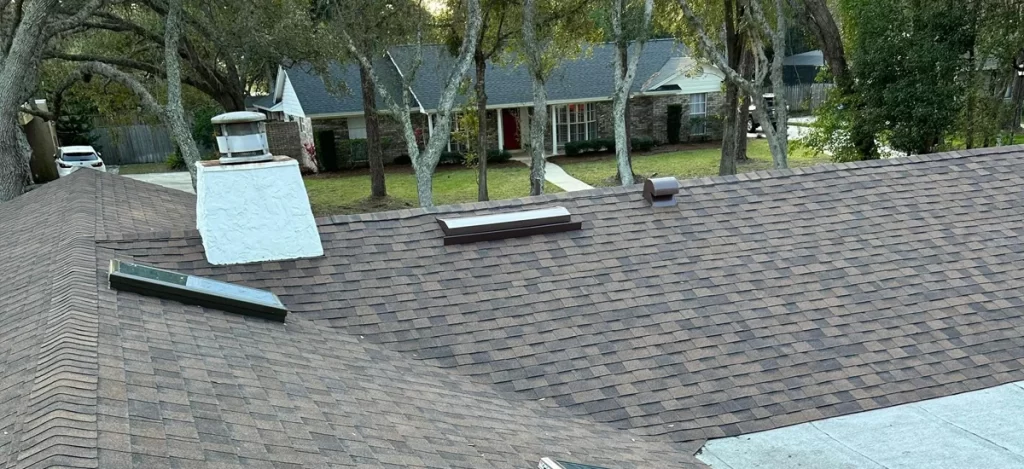The Process of Retrofitting Your Roof for Better Storm Resistance
Your roof is your home’s first line of defense against the elements, and in storm-prone areas, this defense must be particularly robust. Retrofitting your roof for better storm resistance is a proactive step that homeowners can take to safeguard their property from severe weather events. This article will guide you through the comprehensive process of retrofitting your roof, ensuring that your home is prepared to withstand the next storm with resilience and strength.
Introduction to Roof Retrofitting
The Importance of Storm Resistance
With the increasing frequency and intensity of storms, ensuring that your home is storm-resistant has never been more crucial. Storms can cause significant damage to roofs, leading to costly repairs and, in some cases, complete roof replacements. Retrofitting your roof is an effective way to enhance its ability to withstand high winds, heavy rains, and flying debris, which are common during severe weather events. This process not only protects your home but also provides peace of mind, knowing that you’ve taken steps to secure your most valuable asset.
Understanding Roof Retrofitting
What is Roof Retrofitting?
Roof retrofitting involves modifying an existing roof structure to improve its performance, particularly in extreme weather conditions. This process can include reinforcing the roof’s framing, upgrading materials, and adding additional features that enhance its durability and resilience. Unlike a full roof replacement, retrofitting focuses on strengthening and improving the existing roof, making it a cost-effective solution for homeowners looking to enhance their home’s storm resistance.
Why Retrofitting is Essential for Storm-Prone Areas
Homes in storm-prone areas are at a higher risk of roof damage due to high winds, heavy rainfall, and hail. Without adequate protection, these homes can suffer severe damage, leading to expensive repairs and even structural damage. Retrofitting is essential in these regions because it addresses vulnerabilities in the roof, ensuring that it can withstand the forces of nature. Additionally, retrofitting can help homeowners comply with local building codes, which often require specific storm-resistant features.
Assessing Your Roof’s Current Condition
Identifying Vulnerabilities
Before beginning the retrofitting process, it’s crucial to assess your roof’s current condition. This assessment involves inspecting the roof for any signs of damage, wear, or weaknesses that could be exacerbated by a storm. Common issues to look for include loose or missing shingles, damaged flashing, and signs of water infiltration. A thorough inspection will help identify areas that need strengthening and provide a roadmap for the retrofitting process.
Common Weak Points in Older Roofs
Older roofs are particularly susceptible to storm damage due to outdated materials and construction techniques. Common weak points include insufficiently secured shingles, lack of adequate flashing around roof penetrations, and inadequate roof decking. These issues can make older roofs more vulnerable to high winds and heavy rains, making retrofitting an essential step for homeowners with aging roofs.
Types of Storm-Resistant Roof Upgrades
Reinforcing Roof Decking
One of the most effective ways to strengthen a roof is by reinforcing the roof decking. The roof deck is the layer of material that sits between the structural components of the roof and the outer roofing materials, such as shingles or tiles. By reinforcing this layer, you can significantly increase the roof’s ability to resist uplift from high winds, a common cause of roof failure during storms. Techniques such as adding additional fasteners or using stronger materials can be employed to enhance the roof deck’s strength.
Upgrading Roof Fasteners
Roof fasteners, including nails and screws, play a critical role in securing the roofing materials to the roof deck. Upgrading to stronger, corrosion-resistant fasteners can help ensure that your roof remains intact during a storm. In some cases, adding more fasteners or using advanced fastening systems, such as hurricane clips or straps, can further enhance the roof’s storm resistance.
Installing Roof Straps and Clips
Roof straps and clips are additional hardware that can be installed to connect the roof to the walls of the home more securely. These components help prevent the roof from being lifted off the house during high winds. They are particularly effective in areas prone to hurricanes and tornadoes, where wind speeds can reach dangerous levels. Installing roof straps and clips is a relatively simple yet highly effective retrofitting technique.
Sealing the Roof’s Edge
The edges of the roof are particularly vulnerable to wind and water damage. Sealing the roof’s edge with specialized adhesives or flashing materials can help prevent water from seeping under the shingles and into the home. This technique also helps protect against wind uplift, ensuring that the edges of the roof remain secure during a storm.
Choosing the Right Materials for Retrofitting
Impact-Resistant Shingles
When retrofitting your roof, choosing the right materials is crucial. Impact-resistant shingles are designed to withstand the impact of hail, flying debris, and other hazards that can occur during a storm. These shingles are made from advanced materials that are both durable and flexible, allowing them to absorb impacts without breaking or tearing. Upgrading to impact-resistant shingles is a highly recommended retrofitting option for homeowners in storm-prone areas.
Metal Roofing Options
Metal roofing is another excellent choice for homeowners looking to retrofit their roof for better storm resistance. Metal roofs are known for their durability, fire resistance, and ability to withstand extreme weather conditions. They are less likely to be damaged by high winds or hail and can last significantly longer than traditional asphalt shingles. Additionally, metal roofs are lightweight, reducing the strain on the home’s structural components.
The Role of Underlayment
The underlayment is a critical component of the roofing system that sits between the roof deck and the outer roofing materials. Upgrading to a high-quality, water-resistant underlayment can provide an additional layer of protection against water infiltration. This is particularly important in storm-prone areas where heavy rains can lead to roof leaks and water damage inside the home.
Professional vs. DIY Roof Retrofitting
Benefits of Hiring a Professional
While some homeowners may be tempted to undertake roof retrofitting as a DIY project, hiring a professional is often the better option. Professional roofers have the experience, tools, and knowledge needed to complete the retrofitting process correctly and safely. They can identify potential issues that may not be apparent to the untrained eye and ensure that all work is done in compliance with local building codes. Additionally, professional roofers can often complete the project more quickly and with less disruption to your daily life.
Considerations for DIY Enthusiasts
For those who are experienced with home improvement projects, DIY roof retrofitting can be a viable option. However, it’s important to thoroughly research the techniques and materials required for the job and to ensure that you have the necessary tools and skills to complete the project. Keep in mind that improper retrofitting can lead to further damage or leave your roof vulnerable to storm damage. If you choose to go the DIY route, consider consulting with a professional before beginning the project to ensure that you’re on the right track.
Cost Considerations in Roof Retrofitting
Budgeting for Retrofitting
The cost of retrofitting a roof can vary widely depending on the scope of the project, the materials used, and the size of the roof. It’s important to create a budget that takes into account both the immediate costs of the retrofitting work and the long-term benefits of a stronger, more resilient roof. While retrofitting can be a significant investment, it can also save you money in the long run by preventing costly repairs and extending the lifespan of your roof.
Long-Term Savings Through Prevention
Investing in roof retrofitting can lead to significant long-term savings by reducing the likelihood of storm damage. A well-retrofitted roof is less likely to suffer from leaks, shingle loss, or structural damage during a storm, which can save homeowners thousands of dollars in repairs. Additionally, some insurance companies offer discounts on premiums for homes that have been retrofitted for storm resistance, providing another avenue for savings.
The Role of Local Building Codes
Ensuring Compliance
Local building codes often dictate the minimum standards for roof construction and retrofitting in storm-prone areas. It’s essential to ensure that any retrofitting work complies with these codes, as failure to do so can result in fines, legal issues, or even the invalidation of your home insurance policy. A professional roofer will be familiar with the local codes and can ensure that all work is done in accordance with these regulations.
How Codes Have Evolved with Climate Change
As climate change leads to more frequent and severe storms, many local building codes have been updated to reflect the increased risks. These updated codes often require more robust construction techniques and materials, making retrofitting an essential step for older homes that may not meet the current standards. Understanding how building codes have evolved can help homeowners make informed decisions about retrofitting their roofs to better withstand future storms.
The Retrofitting Process Step-by-Step
Initial Inspection and Assessment
The first step in the retrofitting process is a thorough inspection and assessment of your roof. This involves identifying any existing damage or vulnerabilities and determining the best retrofitting techniques to address these issues. The inspection should be conducted by a professional roofer who can provide a detailed report and recommendations for the retrofitting process.
Selecting the Right Retrofitting Techniques
Once the inspection is complete, the next step is to select the appropriate retrofitting techniques based on the specific needs of your roof. This may include reinforcing the roof deck, upgrading fasteners, installing roof straps and clips, and choosing the right materials for the job. The goal is to create a comprehensive plan that addresses all potential weaknesses in the roof and maximizes its storm resistance.
Installation Process
The installation process involves implementing the selected retrofitting techniques. This may include adding additional fasteners, applying sealants to the roof’s edge, or installing new shingles or underlayment. The installation process can vary in length depending on the scope of the project, but it’s essential that all work is done to the highest standards to ensure the roof’s effectiveness in a storm.
Final Inspection and Certification
After the retrofitting work is complete, a final inspection is conducted to ensure that all aspects of the project have been completed correctly. This inspection should be performed by a qualified professional who can provide certification that the roof has been retrofitted to meet the necessary standards. This certification can be useful for insurance purposes and provides peace of mind that your roof is ready to withstand the next storm.
Preventative Maintenance After Retrofitting
Regular Inspections
Even after retrofitting, it’s important to maintain your roof regularly to ensure its continued effectiveness. This includes conducting regular inspections to check for any signs of wear or damage and addressing any issues promptly. Regular maintenance can help extend the lifespan of your roof and keep it in top condition for years to come.
Keeping Gutters and Downspouts Clear
One of the simplest yet most effective maintenance tasks is keeping your gutters and downspouts clear of debris. Clogged gutters can lead to water buildup on the roof, which can cause leaks and other damage. Regularly cleaning your gutters ensures that water can flow freely off the roof, reducing the risk of water-related issues.
Monitoring for Signs of Wear
Over time, even a well-retrofitted roof can show signs of wear. Monitoring your roof for issues such as loose shingles, damaged flashing, or signs of water infiltration can help you catch and address problems before they become more serious. Addressing these issues promptly can prevent further damage and help maintain the roof’s storm resistance.
The Benefits of Retrofitting Beyond Storm Resistance
Increased Property Value
Retrofitting your roof can significantly increase the value of your home. Potential buyers are often willing to pay more for a home that has been upgraded to withstand storms, as it offers them peace of mind and reduces the likelihood of future repairs. A retrofitted roof can be a major selling point, particularly in storm-prone areas.
Lower Insurance Premiums
Many insurance companies offer discounts on premiums for homes that have been retrofitted to improve storm resistance. By reducing the risk of storm damage, retrofitting can lower your insurance costs, providing an additional financial benefit on top of the increased protection for your home.
Common Challenges in Roof Retrofitting
Dealing with Hidden Damage
One of the challenges in roof retrofitting is dealing with hidden damage that may not be apparent until the project is underway. This can include issues such as water damage, rot, or structural weaknesses that were not identified during the initial inspection. Addressing these issues can add to the cost and complexity of the project, but it’s essential to ensure that the roof is fully strengthened and capable of withstanding storms.
Balancing Cost and Quality
Another challenge is balancing the cost of the retrofitting project with the quality of the materials and techniques used. While it may be tempting to cut costs by using cheaper materials or methods, this can compromise the effectiveness of the retrofitting and leave your roof vulnerable to storm damage. It’s important to invest in high-quality materials and professional installation to ensure that your roof is properly protected.
Case Studies: Successful Roof Retrofits
Real-World Examples of Retrofitting Success
Examining real-world examples of successful roof retrofits can provide valuable insights into the process and its benefits. Case studies of homes that have been retrofitted and subsequently withstood severe storms can illustrate the effectiveness of different retrofitting techniques and help homeowners make informed decisions about their own roofs.
Lessons Learned from Past Storms
Looking at the damage caused by past storms can also provide important lessons for homeowners considering roof retrofitting. Understanding what went wrong in these cases and how retrofitting could have prevented or mitigated the damage can highlight the importance of proactive measures and guide the retrofitting process.
FAQs about Roof Retrofitting
Is Retrofitting Worth the Investment?
Yes, retrofitting is a valuable investment, particularly for homeowners in storm-prone areas. The cost of retrofitting is often offset by the savings on repairs, reduced insurance premiums, and increased property value.
How Long Does the Retrofitting Process Take?
The duration of the retrofitting process varies depending on the scope of the project and the size of the roof. However, most projects can be completed within a few days to a few weeks.
Can All Roofs Be Retrofitted?
Most roofs can be retrofitted, but the specific techniques and materials used will depend on the existing roof’s condition and structure. A professional roofer can assess your roof and recommend the best retrofitting options.
How Do I Choose the Right Contractor?
Choosing the right contractor is crucial for a successful retrofit. Look for a licensed, experienced roofer with a strong reputation and knowledge of local building codes. Ask for references and review past projects to ensure they have the necessary expertise.
Will Retrofitting Affect My Home’s Aesthetics?
Retrofitting can be done in a way that maintains or even enhances your home’s appearance. Many modern materials and techniques are designed to be both functional and visually appealing.
What Are the Most Common Mistakes to Avoid?
Common mistakes include choosing low-quality materials, attempting a DIY retrofit without the necessary skills, and failing to comply with local building codes. To avoid these pitfalls, it’s best to work with a professional and invest in quality materials.
Conclusion
Retrofitting your roof for better storm resistance is a smart, proactive step that can protect your home, save you money, and provide peace of mind. By understanding the process, selecting the right materials, and working with a qualified professional, you can ensure that your roof is ready to withstand the next storm. Whether you’re looking to safeguard your investment, reduce insurance costs, or simply sleep better at night knowing your home is secure, roof retrofitting is an essential consideration for homeowners in storm-prone areas.














